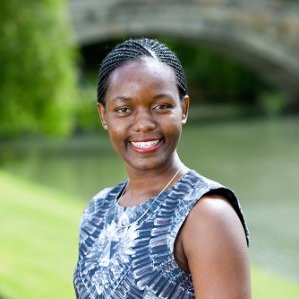Mauricia Nambatya, St. Edmunds College, 2014 - 2015
Mauricia is a Civil Engineer who obtained a Bachelor’s degree in Civil Engineering from Makerere University, Kampala in January 2010. She then worked at Gauff Consultants (U) Ltd for over 4 years, majorly as a Geometric Design Engineer on new and upgrading road projects in Uganda. Alongside the full time job, she also run a network marketing business on a part-time basis.
In October 2014, she joined University of Cambridge to study the MPhil in Engineering for Sustainable Development with the aim of acquiring more knowledge on decision making processes involved throughout the infrastructure project cycle. As a Civil Engineer, she is driven by works that provide improved services to communities and seeks out new approaches to service delivery. She is also passionate about youth development and currently works with Haileybury Youth Trust (HYT) Uganda http://hytuganda.com/, an NGO focused on training youths in sustainable housing construction practice. All walling is done using the air-cured, low carbon Interlocking Stabilised Soil Blocks (ISSBs) rather than the conventional, environmentally damaging fired clay brick. ISSBs are even more economical per square meter of walling due to the dry stacking process of construction and hence a viable building material in many developing countries.
Dissertation title: Investigating the Rationale for Material Selection in Tropical Housing Projects in Uganda – A case for Interlocking Stabilised Soil Blocks (ISSBs)
Students report:
Why did you do the ESD MPhil?
The diverse nature of the course content was none I had ever come across! The ESD MPhil focus on professional breadth rather than technical depth resonated perfectly well with my career interests in managing engineering projects and more so, from a sustainability point of view.
Caution: Because of the diversity, it will sometimes feel like you are having information overload; you therefore have got to be ready to quickly process the content.
How did it help you?
It improved my view of working on a project from a reductionist mindset to thinking in systems. Through the role plays and daily interaction with colleagues with various technical backgrounds, I learned how to relate and work with people of various disciplines on the team. I now live with better consciousness of my surroundings, aware of the complexity of how systems interact and therefore pursue projects questioning the sustainability of the entire project cycle.
What are you doing now?
I am back to Uganda and in October 2015 joined Haileybury Youth Trust, HYT Uganda as the Assistant Country Manager. I perform both managerial and technical roles not in roads but buildings! I engage in day-to-day management of company operations, project definition and scoping, design and preparation of BOQs, preparation of plans for quality control across project sites and conduct monitoring and evaluation of the projects.

